Snow and Winter Landscape Photography
With the 2024 winter season arriving here in the northern hemisphere, I thought I’d post a summary of my top Snow and Winter Landscape Photography Tips as inspiration for this winter. Being out on the trail with a camera after a fresh snowfall is one of my favorite things to do in winter.

Hut in the snow in a frozen landscape
Snow adds a completely different look and feel to any landscape, so it is a great occasion to both be out on the trails and take some photos. Here are my top tips for taking pictures in the snow.
Tips for the trail
Get out early
In winter with the sun rising later it is even easier to be out for sunrise. Since the sun is typically lower on the horizon too, sunrises and sunsets will typically last a little longer too. This means good light for longer. Catch some colors!

Sunrise in Melchsee-Frutt, Switzerland
Get a pair of snowshoes
Snowshoes will allow you to go where few others will. By far the best method for snowy landscape photography. This is especially useful after a fresh snowfall; you will be able to capture the immaculate and pristine fresh snow with no prints, human or animal alike.

A pristine, unmarked snowshoe trail in the Swiss Alps
Don’t forget a warm drink and a snack!
While you should make sure to wear the appropriate warm gear, don’t forget to bring a thermos with a hot drink inside. Take a nice stop along the way, enjoy a warm coffee, tea or hot choco with a snack to just enjoy the landscape around you.
Snow and Winter Landscape Photos & Photography Tips
Photograph the falling snow
Catching the falling snow is tricky. It not only needs to be snowing, but Thin, wet snow will almost be impossible to catch. Bigger, fluffier snowflakes, are the best ones to photograph the falling snow. They are more visible and they also add depth to the photos; closer snowflakes will look bigger and more distant ones will look smaller. This creates a nice, almost 3D-like effect and depth in photos that would be difficult to replicate in other conditions.
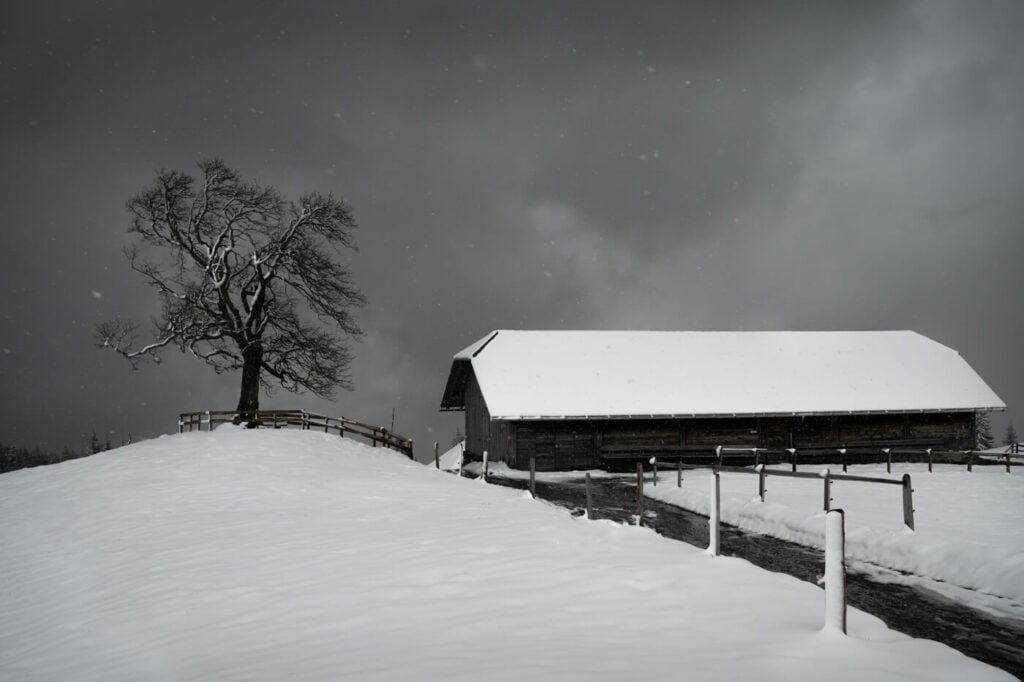
Falling snow on a late-winter landscape.
Think Minimal
If you love minimal photography, a fresh snowfall may be your next thing to try. On a cloudy or foggy day, all the landscape features will tend to merge and disappear. This makes it ideal to capture and isolate features for a minimal winter landscape composition. Fences, trees, bushes and any other silhouettes are all good candidates for a minimal shot. Minimal photos in the snow are by far my favorite when it comes to snowy landscape photography.
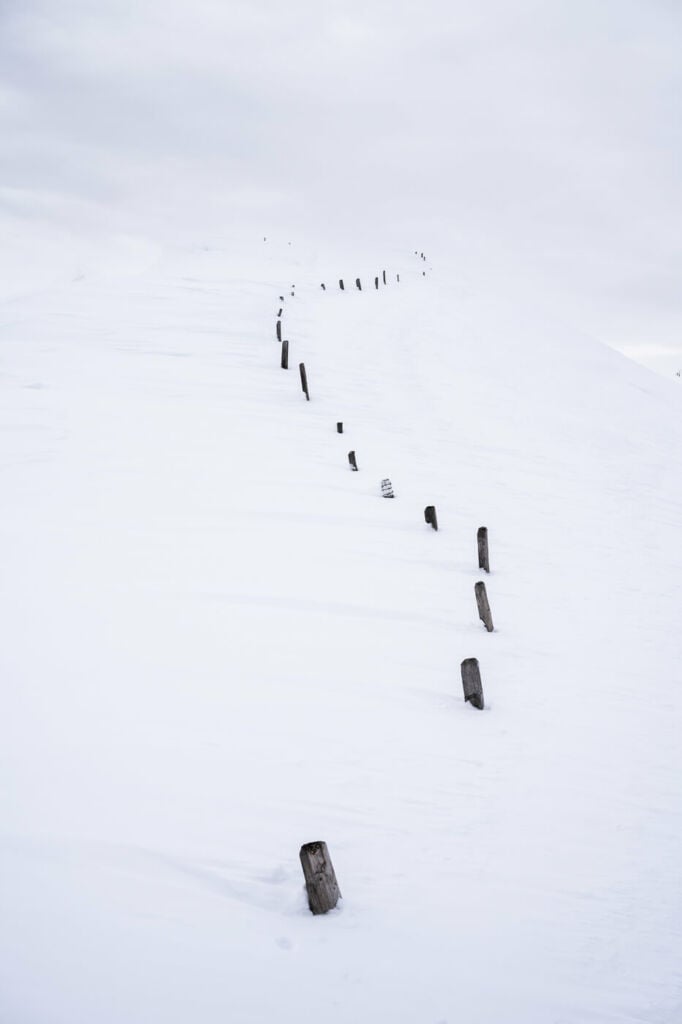
A minimal composition of a fence in the Snow
Monochrome..or almost
If the weather is good and sunny, this is also a good occasion to use the high contrast of a snowy landscape to turn it into black and white. In most cases, you may also be able to get an “almost” black-and-white image by shooting in color. This heavily depends on the subject, but if you think of a tree covered by snow in winter..that’s almost a natural monochrome image.
What I link about this effect is the subtle color that is left in the image. While they still feel like a monochrome, subtle splash of bland colors here and there make these types of images rather unique.

“Almost” monochrome photo of a tree in the snow.
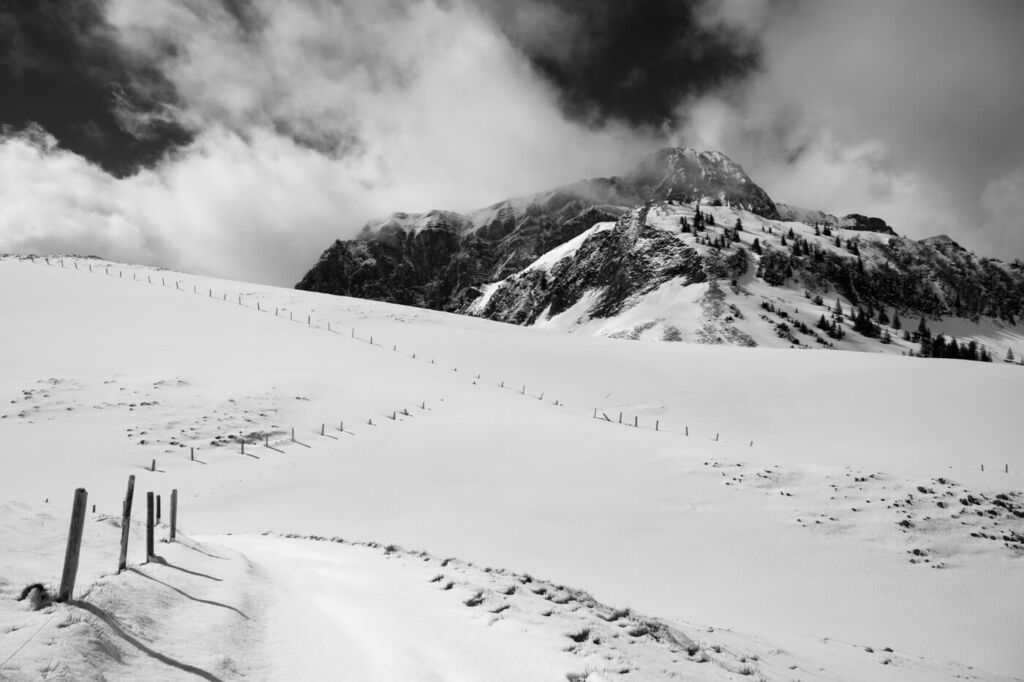
A monochrome image.
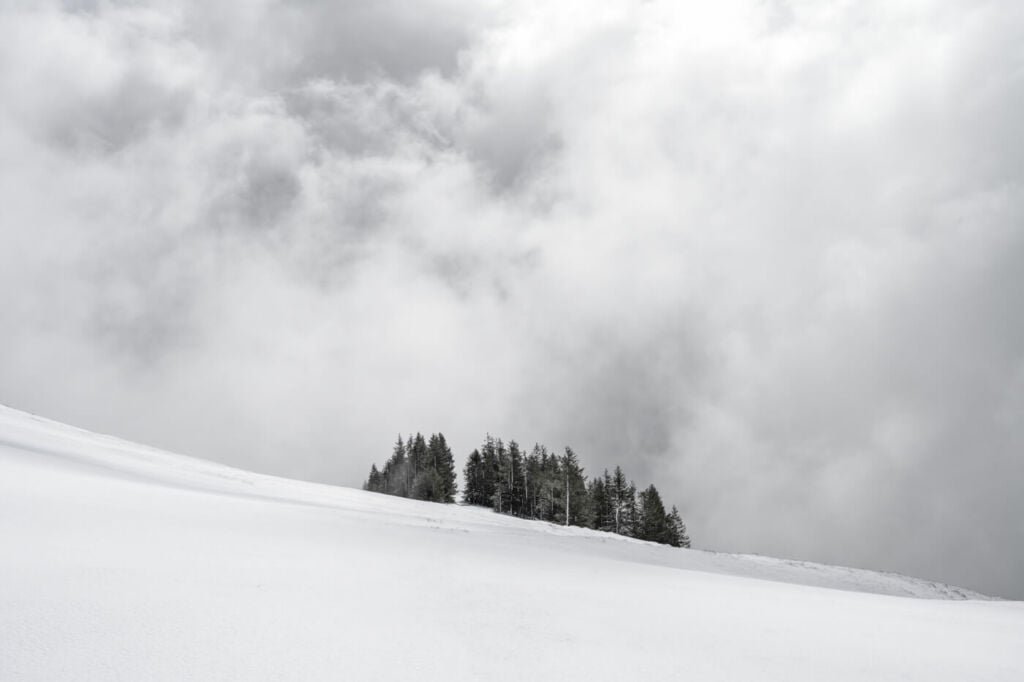
A “color” image
Wait for the bad weather
Don’t be out in a snowstorm, sure. That would be foolish. On the other hand, don’t let some bad weather deter you from going out either. Catch the snow, the fog and the mist. These are all elements that make for a great atmospheric and moody shot. Also, mountain peaks emerging from the clouds, as if suspended in the air.
These are all ingredients and combinations of elements that can add a lot to the overall landscape and look of the scene. This is where the atmospheric conditions are perhaps more important than any subject in the creation of an image.

Falling snow and clouds on a snowshoe hike
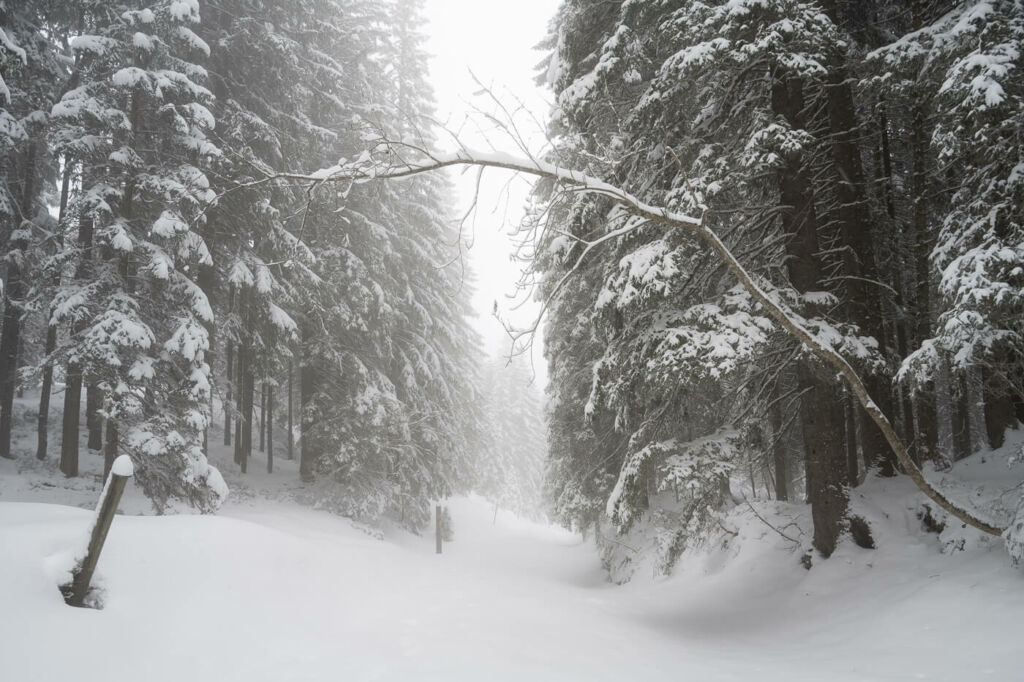
Fog on a snowshoe trail in winter.
Also, catch the good weather!
Unlike classic landscape photography where usually photographers try to avoid the middle of the day or bright, cloudless skies, I think that this works great when shooting a snowy winter landscape. It’s a completely different environment, and such shots can have a strong power to evoke the feelings and the good vibes of a happy day out in the snow.

Some of the magnificent mountains around Engelberg.
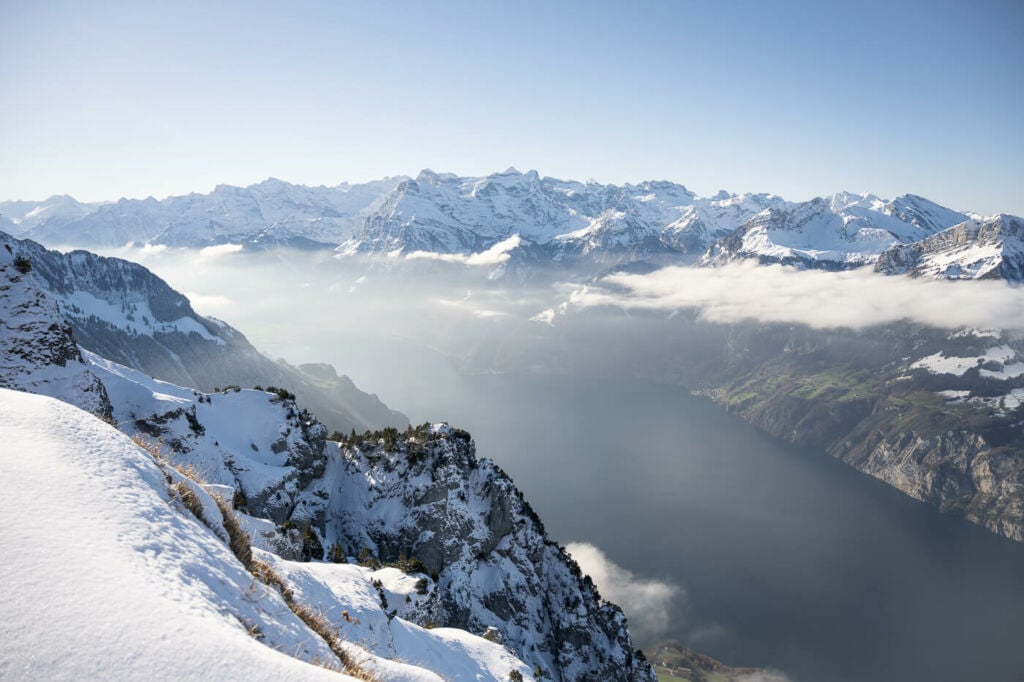
The magnificent views of Lake Lucerne from Fronalpstock in Switzerland
Camera Tips
Taking photos in the snow requires paying particular attention to your gear. All cameras have minimum and maximum operating conditions temperatures. My camera is rated at Zero Celsius, but I have used it up to -15 C. Still I recommend minimizing the exposure of the camera to such low temperatures.
Keep your camera handy
If the weather allows it, keep your camera handling using a backpack strap camera mount. When you are out on the trails on a winter day conditions may change fast and photography opportunities may appear and disappear within a few minutes or even seconds.
Take care of the batteries
In cold temperatures, batteries will drain much faster. Bring enough spare batteries with you; I always have two. Keep them in a pocket inside your jacket. The warmth from your body will help them keep the charge. Additionally, If it is really cold you may want to keep the camera inside your jacket if it’s roomy enough. I wear my snowboarding jacket on very cold days and it is Lange enough to fit my camera inside it. In this case, I keep it on my neck strap and I can still easily pull it out by opening the jacket’s zip.
Keep the lens cap on when not shooting!
Make sure to keep the lens cap on when you are not shooting. Any Humidity or condensation that may get on your front element will freeze on it if it is cold enough. You don’t want to be out for a photo hike with ice on the front element of your lens, do you?
Protect your drone from the snow and winter elements
While Drones like the Mavic 3 or Mavic pro mini 3 have operating temperatures down to -10 Celsius, you may want to fly the m with care. Moisture in the air can freeze on the blades, causing the drone to not fly correctly, become uncontrollable or worst.

Frozen blades due to air humidity. No good!
Conclusion – Snow and Winter Landscape Photography Tips
So these were my top tips for Snow and Winter Landscape Photography. Each time the winter season ends, I am looking forward to the next one to catch some of the ephemeral and ever-changing snowy landscapes. Last but not least, if you want to watch some videos, here is my Snowshoeing and winter landscape photography video playlist.
Additional Resources:
- More landscape photography tips: Cloudy and Overcast Day Photography
- New to landscape photography? Check out my guide on Landscape photography for hikers.
- Landscape with a 70-200 lens; discover why 70-200 is the range I have the most fun with when photographing landscapes
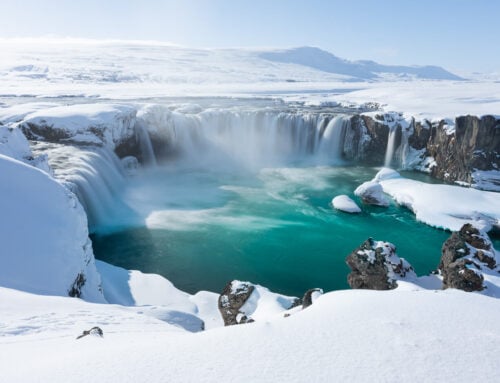
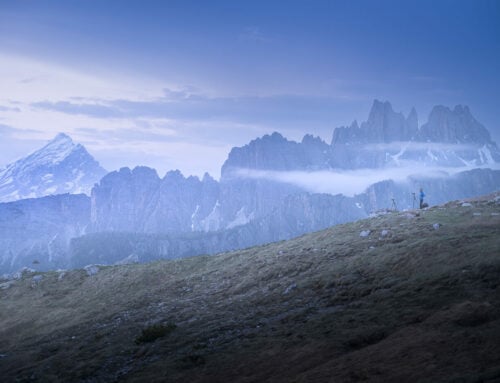
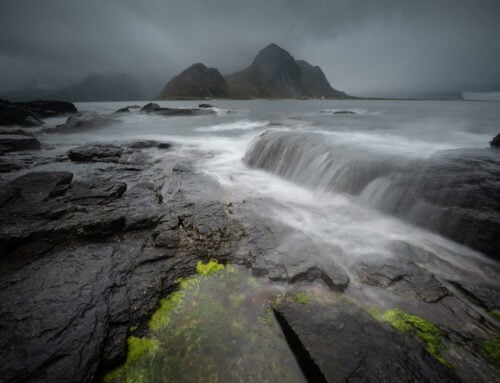

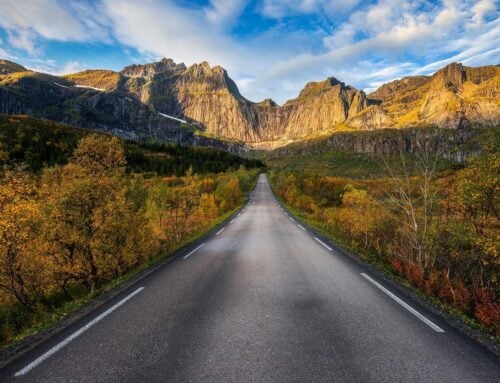
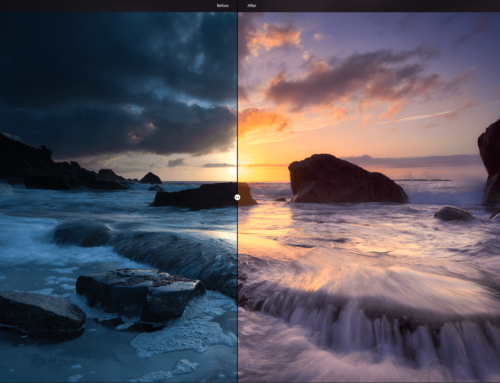
Winter scenes can be incredibly stunning. Silent. Isolating.
Fully agree!